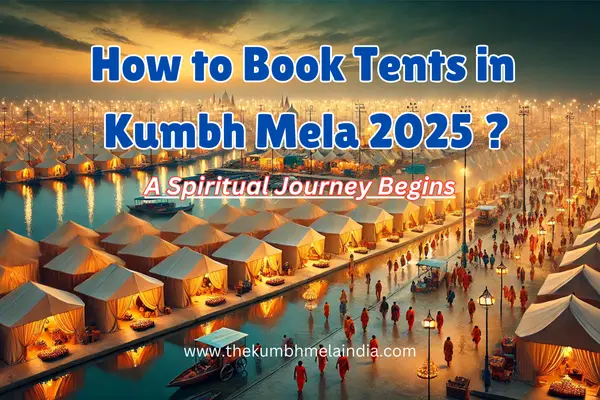The Kumbh Mela stands as one of the most sacred festivals in Hinduism and a marvel of spiritual gatherings globally. Every few years, this colossal event unfolds in one of four cities: Prayagraj, Haridwar, Ujjain, or Nashik, attracting millions of devotees, sadhus, tourists, and seekers from across the globe. But what is it about Kumbh Mela that brings such vast numbers together? How did it begin, and why does it hold such sacred value? Let’s dive into the history, mythology, and purpose behind the Kumbh Mela, unwrapping the mysteries of this ancient spiritual gathering.
The Origins of Kumbh Mela: Mythological Roots
The story of Kumbh Mela finds its origins in one of Hinduism’s most revered texts, the Bhagavata Purana, as well as in other Puranic scriptures. According to legend, the gods (Devas) and demons (Asuras) once joined forces to churn the ocean of milk (Samudra Manthan) in a quest to obtain the elixir of immortality, also known as amrit. They used Mount Mandara as the churning rod and the serpent Vasuki as the rope. This epic event, the Samudra Manthan, resulted in the emergence of several precious objects, culminating in the appearance of the pot (Kumbh) of nectar.
However, an intense struggle ensued as the demons attempted to seize the pot of nectar for themselves. Fearing the loss of this divine substance, the gods appealed to Lord Vishnu, who took the form of the beautiful enchantress Mohini to distract the demons. In the meantime, a series of fierce battles and confrontations unfolded. During these battles, drops of the precious nectar spilled on four places—Prayagraj, Haridwar, Ujjain, and Nashik. These cities, now imbued with divine blessings, became the hallowed grounds where Kumbh Mela would later be celebrated.
Why Kumbh Mela? The Significance of Purity and Moksha
The central purpose of Kumbh Mela is purification. Hindus believe that by bathing in the holy rivers during the Kumbh Mela, they can cleanse themselves of sins, negative karma, and worldly attachments. The act of bathing in these waters is considered a direct path to attain moksha, or liberation from the cycle of birth and death. Devotees believe that by immersing themselves in the sacred rivers at specific auspicious times, they are not only purifying their souls but also moving closer to the divine.
Kumbh Mela is also a vibrant display of India’s spiritual diversity. The gathering attracts sadhus (holy men) from various sects, some of whom have devoted their entire lives to the pursuit of knowledge, self-discipline, and renunciation. Each sect has unique traditions, and they converge at Kumbh Mela to discuss spiritual matters, perform rituals, and share wisdom with devotees. This makes the festival a rare and immersive experience for all attendees, reinforcing the spiritual unity among followers of Hinduism.
The Astrological Significance: Why Four Cities?
Kumbh Mela follows a precise astrological calendar that determines the timing and location of each festival. Every 12 years, the Kumbh Mela is held in one of the four cities based on specific alignments of the planets and stars. The configurations involve the positioning of the planet Jupiter (Guru), the sun, and the moon, each casting its influence upon a different river in a unique city. This divine alignment signifies the ideal time for pilgrims to gather and bathe in the holy waters.
Here is how each city aligns astrologically:
- Prayagraj (Allahabad): When Jupiter enters Aquarius and the sun and moon are in Capricorn, Kumbh Mela is held in Prayagraj at the confluence of the Ganga, Yamuna, and the mythical Saraswati.
- Haridwar: When Jupiter is in Aquarius and the sun enters Aries, Kumbh Mela takes place on the banks of the Ganga in Haridwar.
- Ujjain: When Jupiter is in Leo and the sun is in Aries, the Kumbh Mela occurs on the banks of the Shipra River in Ujjain.
- Nashik: When Jupiter and the sun align in Leo, Kumbh Mela is celebrated on the banks of the Godavari River in Nashik.
Types of Kumbh Mela: Maha, Ardh, and Purna
In addition to the grand Kumbh Mela that occurs every 12 years in each city, there are variations:
- Maha Kumbh Mela: This is the largest of all Kumbh Melas, taking place only once every 144 years in Prayagraj. It is marked by an extraordinary influx of pilgrims, making it the world’s largest religious gathering.
- Purna Kumbh Mela: Occurring every 12 years, this is the standard Kumbh Mela hosted in each of the four cities.
- Ardh Kumbh Mela: Held every six years, this festival alternates between Haridwar and Prayagraj, offering pilgrims another opportunity to bathe in the holy rivers.
Kumbh Mela Rituals: A Sacred Confluence of Devotion
The primary ritual at Kumbh Mela is the shahi snan, or royal bath, taken by sadhus, saints, and devotees in the sacred rivers. These baths are believed to bestow divine blessings and purification upon the participants. The event follows a specific order of precedence, with certain sects of sadhus having the first right to bathe.
Apart from bathing, Kumbh Mela is also a time for spiritual discourse, meditation, prayer, and religious gatherings. Renowned gurus and spiritual leaders offer discourses, while pilgrims participate in a series of rituals, chants, and prayers. For many, Kumbh Mela is an opportunity to renounce worldly ties, donate to the needy, and embark on a path of self-realization.
You May Also Interested:
- When is the Next Kumbh Mela?
- Frequently Asked Questions about Maha Kumbh Mela 2025
- Kumbh Mela 2025 Bathing Dates (Shahi Snan / Non-Shahi Snan Dates)
- Accommodation in Kumbh Mela 2025
- Kumbh Mela Packages Booking
- Guide Services in Kumbh Mela
- Car / Taxi Rental Services in Kumbh Mela
A Global Celebration of Spirituality
Although rooted in Hinduism, the Kumbh Mela has gained international attention and admiration, drawing tourists and spiritual seekers from across the globe. It is recognized by UNESCO as an "Intangible Cultural Heritage of Humanity," emphasizing its global significance as a festival that celebrates humanity, unity, and spiritual enlightenment. The event provides a unique opportunity for cultural exchange, where people from all walks of life, religions, and nationalities gather in a celebration of peace and spiritual growth.
The Remarkable Infrastructure of Kumbh Mela
Organizing a festival of this magnitude requires immense planning and coordination. Kumbh Mela is often compared to a “temporary mega-city,” complete with sanitation facilities, medical services, security, and transportation networks. Government authorities, volunteers, and various religious organizations come together to ensure that this sacred gathering runs smoothly, creating a remarkable model of large-scale event management.
Conclusion: A Timeless Journey of Faith
The Kumbh Mela is more than just a festival; it’s an embodiment of faith, unity, and devotion, bringing together millions to experience a sense of collective spirituality. Through the ancient rites of purification, Kumbh Mela provides pilgrims a path to inner peace and liberation. Its origins may be rooted in mythology, but its message transcends time: a reminder of the pursuit of purity, devotion, and the divine.
In essence, the Kumbh Mela is a timeless journey—one that each devotee undertakes not just to purify the body but to uplift the soul. It’s an invitation to connect with the divine, embrace cultural unity, and witness the mystical world of spirituality in all its grandeur.
Planning to attend the upcoming Kumbh Mela? For the best accommodations and luxurious tents, simply call or WhatsApp us at +91-729-0024-809 / +91-729-0024-810, or fill out our enquiry form. Our team of Kumbh Mela experts will reach out to you within 24 hours to assist you.






